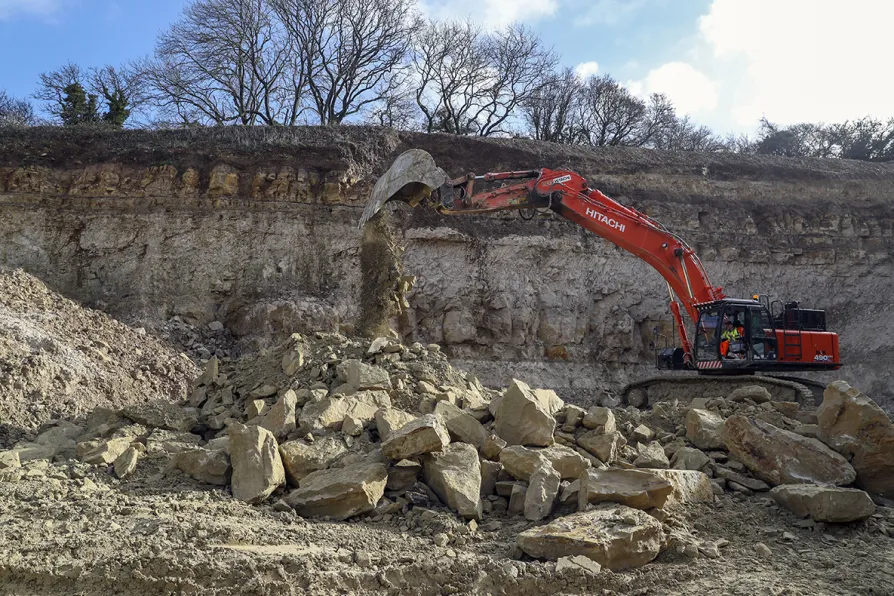
 A excavator working at Chicksgrove Quarry in Tisbury, Wiltshire, February 11, 2020. Photo: Steve Parsons/PA Wire
A excavator working at Chicksgrove Quarry in Tisbury, Wiltshire, February 11, 2020. Photo: Steve Parsons/PA Wire
THOUSANDS of people are demanding a mandatory 3,280-foot buffer zone around all quarries in Wales to prevent people “choking with the dust” swamping schools, hospitals and homes.
Labour’s Carolyn Thomas led a Senedd debate on Wednesday on an 11,473-name petition — submitted by Monika Golebiewska — calling for an exclusion zone around homes, schools and hospitals.
Ms Thomas, who chairs the petitions committee which met campaigners in November, urged Welsh ministers to show they are listening to those profoundly affected by quarrying.
“These are people’s lives,” she said. “It is the safety of children on the way to and from school, with quarry lorries going past.
“The worry about airborne dust in communities, with high rates of serious respiratory conditions, the fear about structural damage to homes.
“And it’s the shock people experience when blasting takes place. It’s hard to watch a video of vulnerable children being terrified by blasting.”
Rhys ab Owen, an independent, put the current 656-foot buffer zone in context.
He said that “656ft is from the Senedd steps to the Norwegian church,” and asked: “Who here would think it’d be appropriate to have such noise and such pollution so near to our national legislature, let alone so near to where children live, are educated and play?”
And he said the blasting at Craig-yr-Hesg is only 440ft from Cefn primary school and 358ft from Glyncoch rugby club, “so, clearly, the current buffer zone is not enough.”
Heledd Fychan, who represents South Wales Central and has campaigned against Craig-yr-Hesg, raised the plight of people in the quarry’s shadow, who have described life nearby as a slow Aberfan disaster.
The Plaid Cymru politician told the Senedd: “I think it is scandalous what is happening to the community of Glyncoch. It is scandalous that their concerns are dismissed.”
Caerphilly Senedd member Hefin David expressed concerns about a planning application to extend a quarry in Gelligaer being approved despite the objections of people living nearby.
He told the Senedd: “When blasts happen, residents’ windows shake. It can be quite a shock, and we have very little warning as to when these blasts are occurring.”
The Labour backbencher called for planning guidance, known as MTAN 1, which has not been updated since it was introduced 21 years ago, to be reviewed.
Delyth Jewell, Plaid’s deputy leader in the Senedd, who represents South Wales East, warned that the quarry is a constant worry for people in Gelligaer and Penybryn.
“These residents are choking with the dust,” she said.
“We have to see change. And most of all we need a system that empowers local residents, not silencing them, I’m afraid, as is happening at the moment.”
She said that people worry about structural damage, their insurance being affected and homes being devalued.
“But most of all they are worried about their children,” she said.
“One resident has written to me talking about how the machinery and noise have woken her sleeping baby, how she has to keep doors and windows closed in hot weather because of an ugly cliff face of pure dust.”
Wales’s Economic Secretary Rebecca Evans described introducing a 656ft buffer for new and existing quarries as a blunt tool.
She said that the contribution of the minerals industry is often overlooked, with the sector playing a crucial part in infrastructure such as housing, schools and hospitals.
“We don’t agree that a blanket 656ft buffer zone on new and existing quarries would be appropriate or effective,” Ms Evans said, arguing decisions are best made locally.










